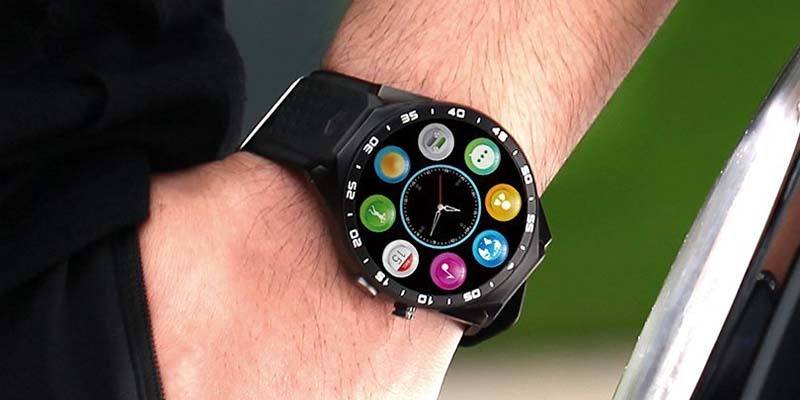While the smartwatches within the market today are very nice and revolutionary, the sales of those watches are still slowly build up. it’s expected that about 1.2 million smartwatches will ship this year, a paltry number compared to the estimated 1.5 billion smartphone users within the world. What might be the rationale for this? it’s likely that the present smartwatches don’t have the critical components or features which will make them a runaway success.
So what is going to make the right smartwatch?
I have condensed it right down to five components that require to be addressed before we will see this class of wearable electronics begin. These five components are design, functionality and reliability, apps, power consumption and battery life, and lastly, durability. Why do I feel that these are important? Well, let’s check out them one by one.
Design
The design of the smartwatch is often split into three separate parts, namely the watch body, the watch face, and eventually the wrist strap.
The first thing that folks check out would likely be the watch body. Is it too bulky, does it look cool and fashionable? the perfect body should be suitable for both casual and formal wear. for instance, the Pebble with its nice clean sporty look would blend well with sports attire but might look a touch out of place when worn with a suit and tie. The newer contenders just like the AGENT or Vachen however, huawei watch gt 2 might be worn with normal casual attire or formal wear.
The watch bodies should be of an inexpensive size also. the dimensions of the dive computers made by Suunto are a reasonably decent size without being unwieldy. they will be worn sort of a normal wristwatch and most divers do this.
Functionality and reliability
Other than just simply wealthy, a successful smartwatch should be ready to perform its duties as a smartwatch also.
Firstly, what should the screen be? A touchscreen, normal LCD, or e-ink display? Each option has its own benefits and drawbacks and affects several key considerations of a smartwatch, like design, functionality, and power consumption. For starters, does a slight screen add up for a smartwatch? Would one be ready to use the watch without being frustrated with jabbing at such a little screen? a little screen would also mean that you simply cannot display tons of data. Apple appeared to have tested this by releasing a touch-capable iPod nano, which many became a watch. But the iPod nano remains an iPod, can it do what we require of a smartwatch? Perhaps Apple has learned some interesting insights into wearable technology with the iPod nano “experiment”?
Having said that, I feel that a touchscreen would definitely increase the usability of the watch compared to pressing buttons to scroll and choose (that’s so 1990s right?). Besides, with touch screen smartphones being so ubiquitous now, this could be something that folks expect. However, this increase in usability is balanced off by a rise in power consumption. While it’s great to possess touch functions, it wouldn’t be so great if your watch needs charging every few hours.
Apps
Many believe that without the Apple SDK and App store, the iPhone 3G and subsequent models wouldn’t are as successful as they’re today. Apps provided a way for third-party developers to increase the functionality of the device.
In fact, with numerous third-party developers out there, apps and functionality are often added at a faster rate and even better than what the manufacturers themselves can do. But in fact, watch manufacturers need to consider the OS core and hardware development also, therefore the development of those apps should best be left to external developers.
Power consumption and battery life
Smartwatches can only function as a smartwatch when it’s power, so extended battery life is vital. it’ll be useless if it can only be used for each day or less before you would like charging. like all gadgets with a computer processor, more powerful applications that need more complex calculations or more active sensors will spend battery faster than simpler apps. The tradeoff arises again, does one choose a watch that features a long battery life but very simple apps (like the Casio GB6900AA and Cookoo) or one that gives more advanced functions but last for a way shorter period of your time (like the Sony SmartWatch or MotoActv)? Will consumers be satisfied with a watch that does not have true smart functions? for instance, the Cookoo displays only a flashing icon to represent the sort of incoming notification, which doesn’t provide any additional information to me and that I will still need to take my phone out. This defeats the aim of getting a smartwatch.
Now providing a tool is in fact better than no tool in the least, but will developers use this? I feel that at the beginning, this won’t be used the maximum amount or as stringently because the makers of the Agent would expect. the most focus of most developers is going to be to develop something which will be embarked on the market. This could be the case for free of charge apps also (you pay peanuts, you get monkeys!). Of course, this may not last long. Developers will start that specialize in fine-tuning their apps once most of the most functions are out and other people start using power consumption as a differentiating factor. With social media and every one of the resources on the web now, it’s easy for people to share their experiences with an app. If an app is understood to be A battery region, it’ll be known and other people will run to other competing apps. we’ll see a maturation of the apps, ranging from simple apps that do few things, to more advanced battery-sucking apps and eventually good quality paid apps that are optimized for your watch.
Watches – Casio GB6900AA and Cookoo
Battery life – Over a year
Battery conservation methods – Simple functionality
Watch – Pebble
Battery life – a few weeks
Battery conservation methods – E-Ink screen
Watches – Sony SmartWatch and Motorola MotoActv
Battery life – 3-5 days
Reasons for battery drain – Touchscreen
Watch – I’m Watch
Battery life – each day
Reasons for battery drain – Touchscreen and Bluetooth Internet tethering
Other than battery conservation, the battery used is another part of the watch that needs some scrutiny. Casio and Cookoo use a typical CR2032 battery in situ of rechargeable batteries and that they can choose a year or two before changing batteries. These batteries are easy to seek out and replace, but can they power a more complex smartwatch? Perhaps not.
So it might seem that rechargeable batteries could be needed to power smartwatches, least we might get to keep a drawer filled with CR2032 batteries ready. therefore the method wont to recharge the battery would be a crucial consideration because, in a way, it also affects the planning of the watch body.
Charging with a typical USB cable is more convenient compared to proprietary charging cables as these USB cables are commonly found anywhere. However, that exposed USB port would mean that the watch wouldn’t be water-resistant. therefore the convenience of charging is going to be balanced with the necessity for water-resistance. However, since water-resistance would be important for everyday use, it might seem that using the ever-present USB cables would need to go.
Other smartwatches chose the utilization of proprietary cables for his or her charging needs. they need allowed watch manufacturers to form their watches water-resistant and still easy to recharge. the sole problem comes once you are far away from your proprietary cable or lost it. Then you’re stuck without how to recharge your watch. this may subside of a drag when more people get an equivalent watch as you or third party cables become more available.
Durability
As much as I prefer my iPhone, once I first got my iPhone (with its large glass screen), I used to be worried that I might drop or hit it against something. So, I’m generally careful when using it. However, my wristwatch may be a different matter. It seems like it’s a part of my arm and something, I forget it’s there. Normally, that might be an honest thing, as you’d not need a watch that weighs heavily on your hand, but meaning that sometimes, the watch is subjected to quite a few unintended knocks. As careful as we attempt to be, the watch will still be subjected to quite a little bit of abuse as compared to a phone. So a sensible watch must be harder than a smartphone.
The Casio smartwatch is made sort of a tank, as you’d expect from any watch bearing the G-Shock moniker, but can we need such a troublesome watch all the time? If you are doing, then this watch or
those who love it would be an excellent fit for you. For the remainder, that use it for more everyday use, would likely need something between fragile and therefore the G-Shock.
Marketability
I know this is often the 6th item on the list, but as I used to be scripting this article, I felt that this “bonus” section is simply as important because of the rest. Why? Because marketing can make or break a product launch.
The product must seem cool, or a minimum of accepted by the people. Buyers got to be convinced that this is often something they need. It must shed its image of being just another early adopter’s toys and become something mainstream, something everyone will want. A watch that has something to supply for everybody. check out smartphones. They came at a time when nobody thought that there was a requirement or want to be constantly connected. Blackberry users did, but most of them were businessmen that needed email access, a distinct segment market. Then the iPhone came along and therefore the smartphone market was created.
Therefore, the watch-maker must which functions will help fulfill the requirements of its audience. Right now, it might seem that the requirements of individuals are:
Worried about missing important calls, emails, or texts
Worried over losing their phone
Want to stay contactable (or some people just cannot hear their phone ring)
Want to be more connected to their electronic world
Don’t want to stay checking their smartphone screens
Easy to use and may fit into their daily lives. Be there when required but disappear when not needed.
All these issues are often addressed by listening to the 5 factors mentioned during this article. How will they be implemented would be exciting to ascertain?
Final words
The perfect smartwatch won’t exist. Different people have different requirements. Some prefer a smallish watch that’s fashionable; some would rather have an outsized watch with a pleasant readable face. Of course, there are some factors like reliability, durability, and water resistance that are non-negotiable to most. So, will there be a smartwatch that has mass-market appeal or will there be many variants of a watch that will satisfy different segments of the market?
I think that whoever comes up with a smartwatch that hits the sweet spot, appealing to most of the people like what Apple did with the iPhone, will start with an incredible advantage and gain quite a big market share. they’re going to likely be those who will get the smartwatch market growing and become more appealing. However, with the massive sort of individual preferences, there’s room for other independent watchmakers or other companies to make smartwatches that will appeal to everyone else.








